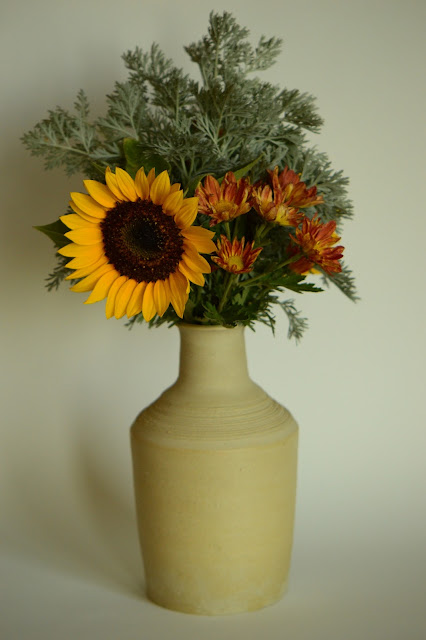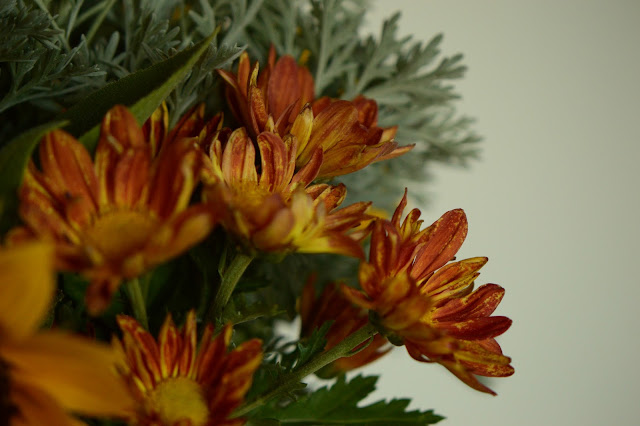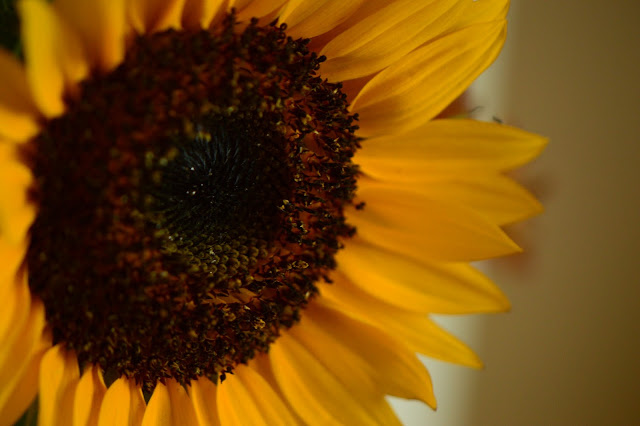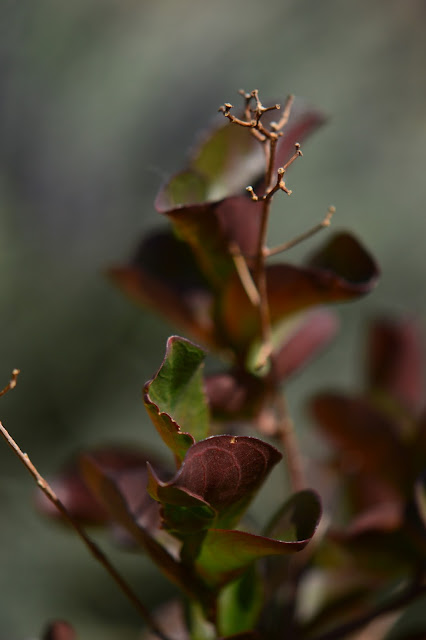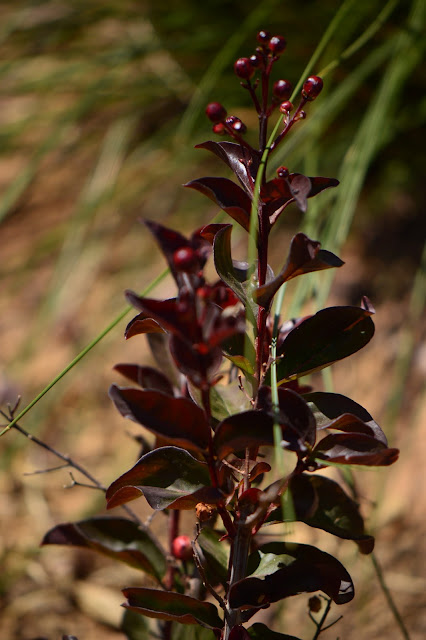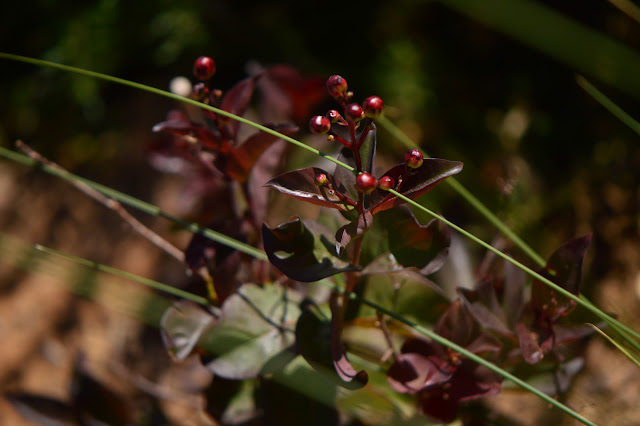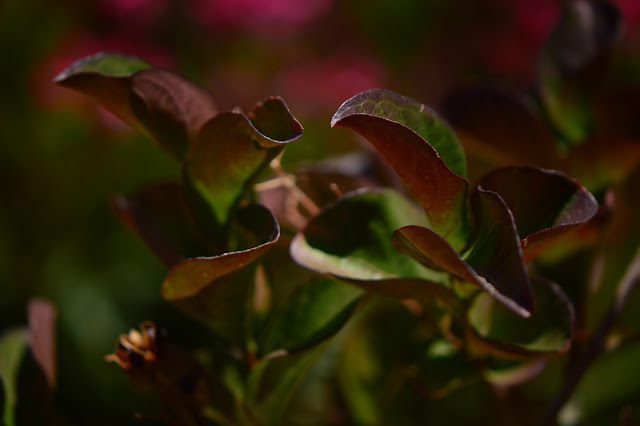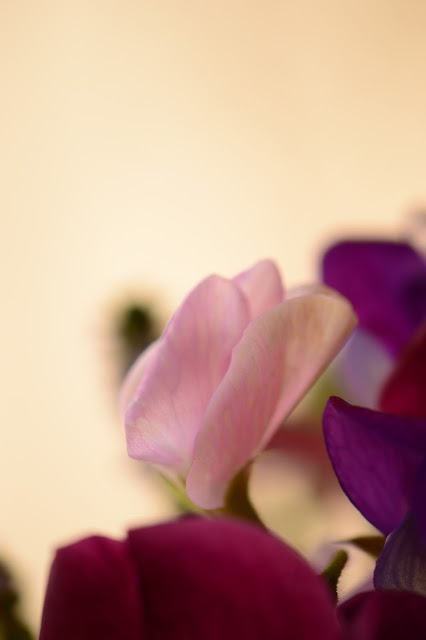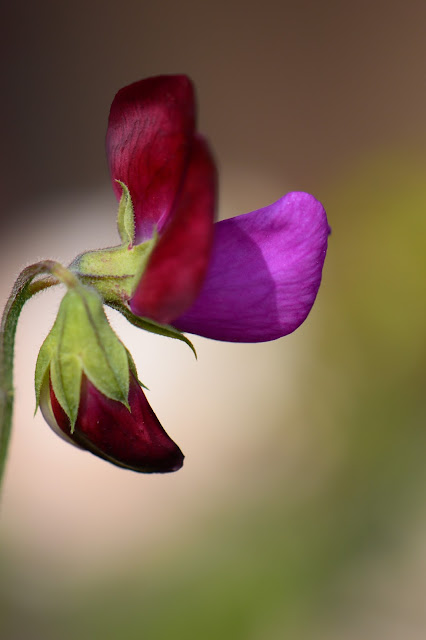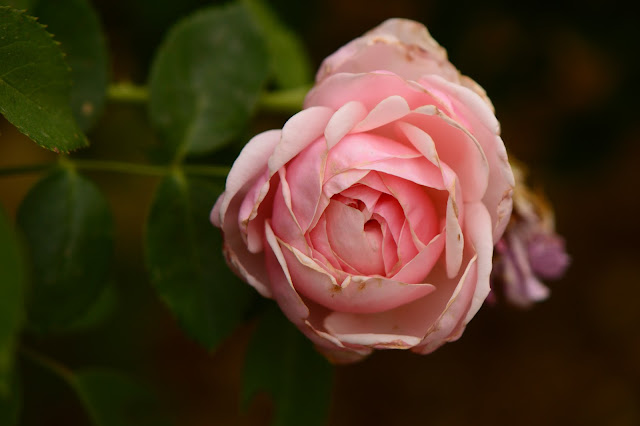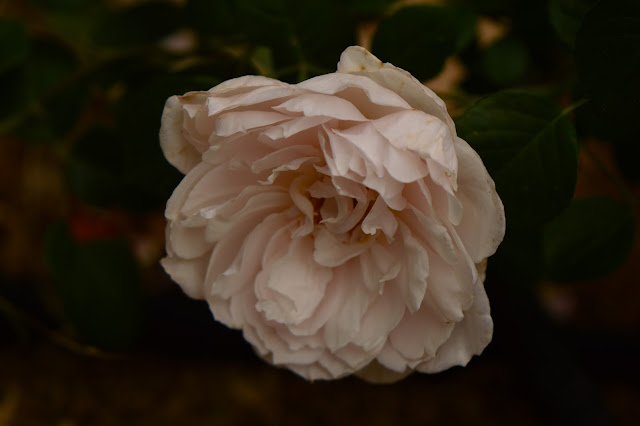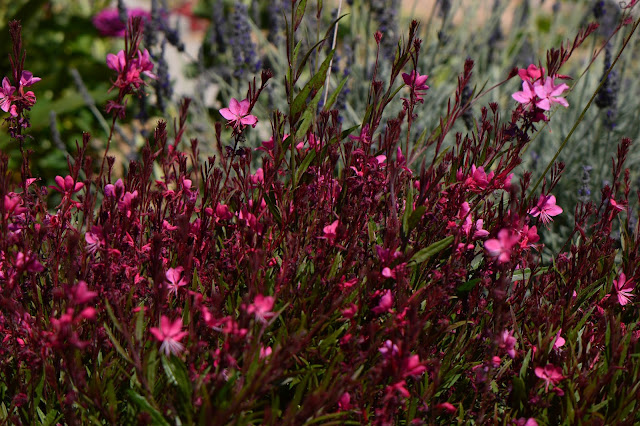I had a good many more types of bulbs to try this year than last. In particular, there were some that were not officially "spring bulbs", but which proved to be exactly that. Types such as Ixia and Hippeastrum have certainly rounded out my ideas of what the season could mean in the desert garden.
 |
| Hippeastrum "Ambiance" |
Freesia
Planted in the green in late spring of 2015. One of the first cormous plants to bloom this year and very successful. Healthy plants and heavy bloom. These were placed in an area that receives at least a half day's shade. I think they would also do well with a little more sun (see below). Wonderful color and fragrance. In their current location, they were not over-demanding of water.
Narcissus canaliculatus
Planted fall of 2014. Came up scantily and bloomed very sparsely in 2015, leaves but no blooms in 2016.Narcissus jonquilla "Suzy"
Planted fall of 2014. Only a few sprouted. No blooms. No showing at all in 2016.Narcissus x odorus
Planted fall of 2015. Came up healthy and bloomed freely, two flowers to a stalk, good fragrance. This is the Single Campernelle, so I expect the Double Campernelle, also known as Queen Anne's Double, would grow well here too.Narcissus tazetta "Nir" (?)
Planted fall of 2015. Identity doubtful as "Nir" should be white/white, more floriferous than, but similar to, the traditional paperwhite "Ziva". The plants I grew had blooms which began as white/yellow and eventually faded to a white/primrose, but I still would not call the shallow trumpets white! This was probably the variety known as Chinese Sacred Lily. At any rate it grew and bloomed well and was almost certainly some sort of paperwhite. Tazettas in general and paperwhites in particular are often recommended for growing in a mild-winter climate. Foliage emerged much later than N. x odorus (and has lasted much longer), but bloom began only slightly later.Iris bucharica
Planted fall of 2014. Disappointing in 2015, with a low sprouting rate and no flowers. Did not show at all in 2016. Perhaps this is somehow gardener error as this Juno iris should be adapted to hot, dry climates. Or perhaps it requires some freezing weather in winter, though I see no references to this. Perhaps worth another try but only if I can get more information on why it failed.Dutch Iris "Blue Magic"
Planted fall of 2014. Came up well in both 2015 and 2016, but many plants were blind, with only three or four flowering stalks total in 2016 (out of nearly twenty bulbs). Given the planting location, this could be a lack of sunlight or water, or both.Iris reticulata "Harmony"
Planted fall of 2014. One or two flowers in 2015, none at all in 2016 though leaves emerged. A species probably requiring more winter cold than I can provide without artificial chilling.Tulipa saxatalis
Planted fall of 2015. Tulipa saxatalis, along with T. clusiana varieties, is the most recommended tulip for low-winter-chill growing. It grew and bloomed freely, slightly later than the early narcissus varieties above. Plants are small, species-type tulips, which cannot replace the showy border tulips but are quite delightful in their own right.Hippeastrum "Ambiance"
Planted late summer or autumn of 2015. I had grown "Ambiance" in a container for Christmas 2014, then kept it in its pot through much of the following year. As it showed no signs of going dormant, I finally planted it out into the garden, where it went through a winter dormancy to come back and bloom well this spring. Since then I have also planted H. "Naranja" into the ground, where it is growing well. So far foliage is fairly long-lasting, something to plan for when siting these bulbs. They appear to be among the most promising spring bulbs for this garden and an excellent replacement for border tulips in terms of size, substance, and color impact.Dichelostemma capitata
Planted in the green during spring of 2015. These native bulbs have a tendency to come up in the most inhospitable spots in the yard, and last year I transplanted several of them into the garden. Two grew and bloomed despite significant shade from a nearby rose bush. These are not very conspicuous plants, with their thin, rangy foliage and small, pale flowers; but they are beautiful when viewed closely, with small, open bells of a dainty blue. Being natives, they are certainly well-adapted. I transfered a couple more from our ersatz driveway this spring and hope to see them thrive also.
Ranunculus asiaticus
Planted autumn 2015. Magnificently successful, but water guzzlers. These grew in considerable shade (with good drainage) near the patio roof and bloomed well and long. I have left the corms in the ground though R. asiaticus has a dubious reputation for continuing in the garden. Color mix included yellow, scarlet, and cherry red, as well as orange and even apricot, though the latter were not as robust. Corms planted in a container were impossible to keep happy, wilting at the slightest provocation; ranunculus did much better in the ground for me.
Ixia
Planted spring of 2015. Sold as a mix, but all flowers had characteristics of I. paniculata. This was a surprise plant this spring. I planted the corms last spring, expecting bloom during summer. None so much as sprouted during summer of 2015, and I gave them up as a total failure. During winter a number of corms finally sent up fans of foliage; then a few followed with bloom stalks laden with white flowers. I believe these would be better planted in autumn for bloom during spring in this climate. While the proportion of bloom was low, these seem well worth a second try, realizing they will not be summer-blooming here and should be planted accordingly.Ornithogalum arabicum
Planted fall 2014 and again fall 2015. So far fairly reliable. Came up and bloomed profusely in spring of 2015, a little more sparsely in 2016. They have nice size and substance as a border plant, and I would like to see them naturalize in this garden, but there is no sign of this yet. So far these are the latest to bloom of the spring bulbs and a lovely conclusion to the season.The season could, in fact, have extended a good deal longer; but until now I have focused on the early-flowering types, not knowing just when they would bloom here or how soon summer's heat might set in. Watching two springs in the garden, I am sure I will be using some of the later varieties by next year.
All in all, spring of 2016 was encouraging in the matter of bulbs. I realize now that, being decidedly seasonal, many of these plants might be better off in the sunniest spots in the garden; with the early bloomers, at least, there is no priority for shade, as there is with summer plants.
Differences in drainage throughout the garden may play a role also. I have always found narcissus fairly tolerant of clay, for instance. And I hope that as I can improve the soil regularly, more of these bulbs will settle in to bloom year after year.












